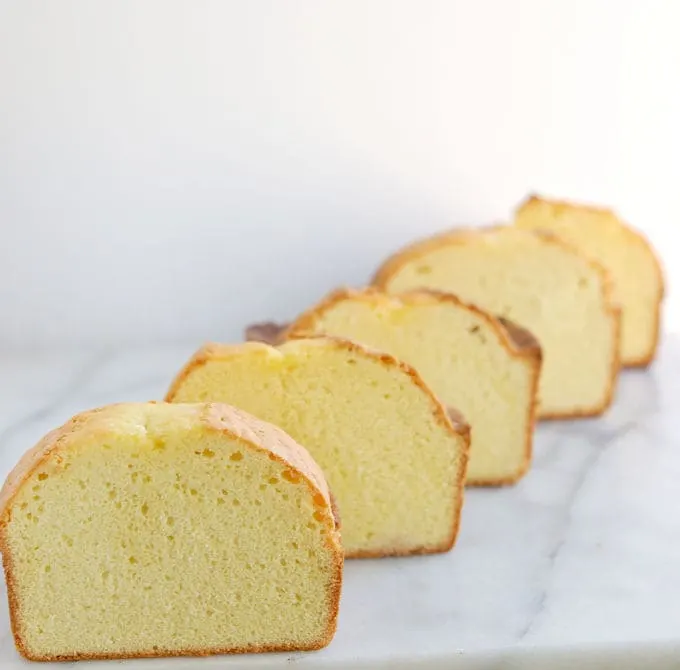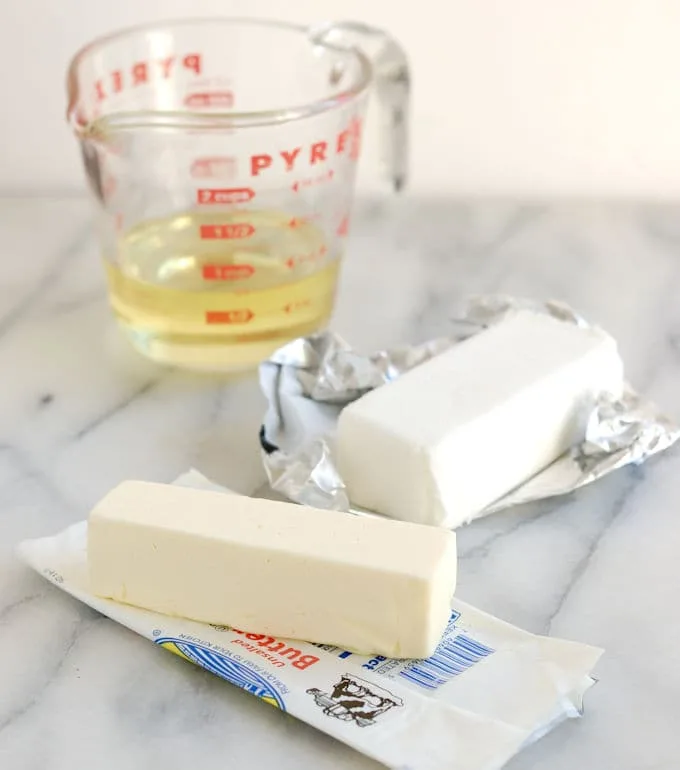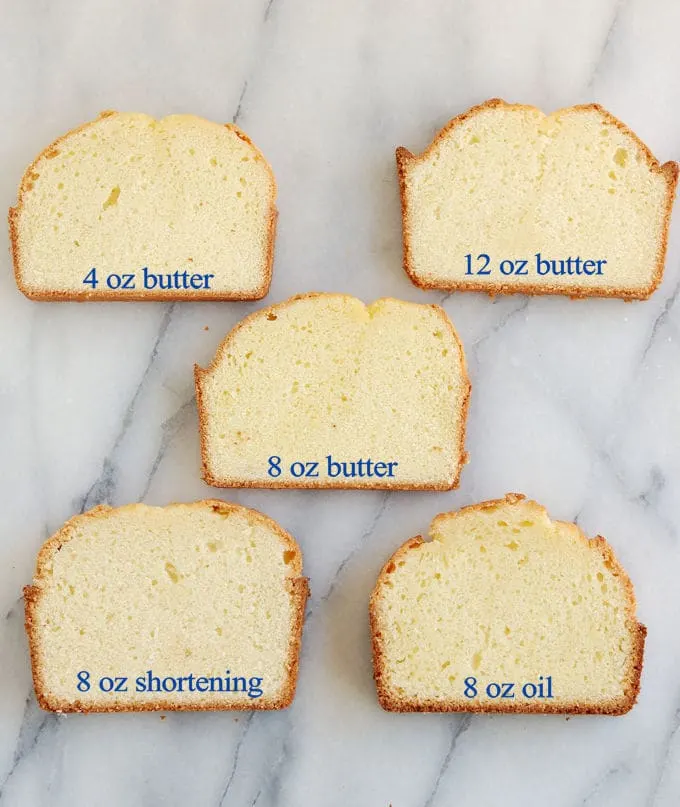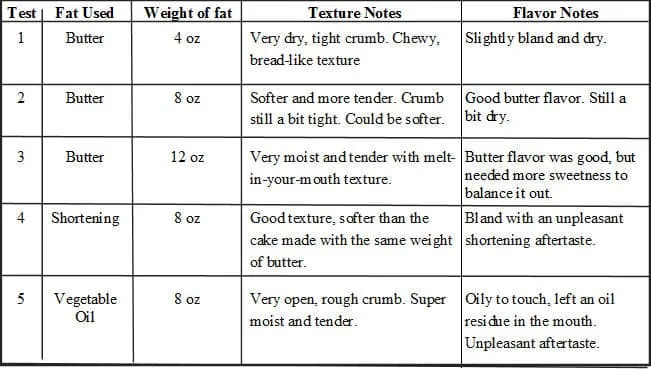The Function Butter & Other Fats in Cake Batter
Welcome to class #6 of 7 in the “Cake Batter” course. This article will explore another ingredient in cake batter, butter and other fats.

To learn general information about the science of butter and other fats please visit the Baking Ingredients – Butter & Other Fats page. This class is specifically about butter and fats in pound cake batter.
The ingredients that strengthen the cake structure (flour and eggs) need to be balanced with the ingredients that weaken the cake structure (sugar and fat).
To create a moist, sweet and tender cake that bakes up with a nice even crumb the four main ingredients have to work together.

What butter and fat does in Cake Batter
Fat acts as a tenderizer in cake batter. First, because it adds moisture and richness to the cake and, second, because fat interferes with gluten formation in the flour and with coagulation of the eggs.
Solid fats, like butter and shortening, are also the vehicle for creating air pockets in the cake batter. A light and airy cake will fall apart more easily in your mouth, which creates an impression of tenderness.
The three main fats used in cake batter are butter, shortening and oil. Certain fruit purees can also used to replace some or all of the fat in some cake recipes.
Lets look at each and find out the advantages and disadvantages.
Testing different fats in cake Batter:
I baked 5 pound cakes using various amounts of butter, shortening and vegetable oil. Otherwise I kept to the traditional quatre quarts recipe, using of 8 oz of each ingredient.


So, as I pretty much already knew even before running the tests, for a pound cake, butter is the only way to go.
Using oil, shortening and even fruit purees can work in other cake recipes, but not for pound cake.
Other cake batter classes:
Next up: The Cake Recipe Formula
- Reverse Creaming
- The function of flour in cake batter
- The function of eggs in cake batter
- The function of sugar in cake batter
- The function of salt and baking powder in cake batter
When we’re done experimenting with all the ingredients for this “cake batter” course, we’ll use all we’ve learned to create Pound Cake Perfection.


How did you add the oil to the recipe?
I would imagine oil being a liquid, how can you cream it like the other solid fats?
With the reverse creaming method you add the oil to the flour as you would the butter.
Hi Eileen,
I have a carrot and date cake recipe that uses 1.5 eggs, 1 cup flour, 1 cup grated carrots, 1 cup chopped dates, 3/4 cup sugar and 3/4 cup oil. I want to convert this recipe into an eggless one. I learnt from another recipe that a good substitute for eggs is condensed milk. And for every egg used, it translates to 1/4 cup of condensed milk. Also since it’s sweetened condensed milk, I would need to reduce sugar by 1/3rd. Does it sound ok to you if I were to use 3/8th cup of condensed milk to replace the egg . I’m also planning to add 1tsp of lime juice to the 1/4 tsp baking soda and 1/4 tsp of baking powder. Do I need to reduce the oil?
Off the top of my head I couldn’t say. I’ve never tried condense milk for eggs so I’m not sure what the outcome would be. Personally, I’ve had good success with Bob’s Red Mill egg replacer.